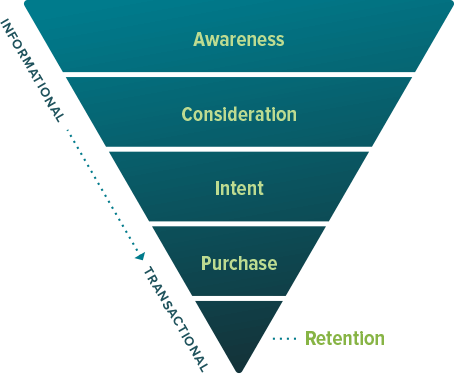
What Is Demand Generation in Marketing? 15 Critical Strategies
Jun 26, 2020|Read time: 14 min.
Key Points
- Demand generation is a marketing powerhouse that builds brand awareness, increases traffic, and secures new leads.
- Demand gen for B2B companies is all about creating a predictable pipeline for your sales team.
- Demand generation strategies often include blogging, downloadable content, webinars, podcasts, videos, influencer marketing, PR campaigns, SEO, and more.
As marketing teams mature, they begin to realize that even the most polished SEO strategies only get them so far. At some point, you need to transform curiosity into customers. You do that through demand generation.
Demand generation marketing is a powerhouse that builds brand awareness, increases website traffic, and secures new leads. It’s the antidote to silos between the sales and marketing teams. So, if you want to generate a full, healthy pipeline of prospective customers, then read this article carefully.
What is demand generation marketing?
Marketing term
Demand Generation
Demand generation is the process of creating awareness and demand for your products or services. It expands your audience, generates urgency, and clarifies your solution to transform interest into action.
Demand generation marketing is all about creating and accelerating a predictable pipeline for your sales team. First, it includes the initial campaigns so that your target audience opts in to your mailing list. Furthermore, it guides your audience to engage with your content, attend your events, and more. Demand gen marketing nurtures and engages your prospects, keeping your brand top of mind.
The goal is to move them through the buyer’s journey until they become a qualified lead. Then, you can transform them into a new customer with the perfect sales pitch.
Demand generation vs lead generation
Demand generation aims to grow your audience by bringing new visitors to your website and introducing them to your solutions. On the other hand, lead generation aims to convert your audience into qualified leads. It’s a subtle distinction, so we wrote an entire article about demand generation vs lead generation to clarify the differences.

Demand gen feeds into lead generation. First, you need to build awareness and develop interest because not everyone is ready to opt-in or to convert immediately. In fact, especially at large enterprises, buyers are locked into vendor relationships that prevent them from looking for alternatives until set times.
Although an audience member may not be ready to talk with your sales team yet, they might want to watch your videos or read your blog posts. Consuming useful, entertaining and actionable content builds trust and brand awareness. So, when that audience member is ready to consider a purchase, you’ll already have a foot in the door!
Lead generation is more focused on converting prospects into “qualified” status to initiate sales conversations with the brand.
Demand gen and lead gen overlap in certain areas. For example, if you offer product-focused webinars, driving registrations could be considered both. And when nurturing your database, both are applicable for building the relationship as you move them through the conversion funnel.
Make Connections that Matter
Uncover what your customers are looking for in real time and meet their needs with valuable content.
B2C vs B2B demand generation strategies
B2C companies typically have to get buy-in from only one person: the customer (and maybe their spouse or family). B2B marketers, on the other hand, usually have to get the buy-in of entire teams, key decision-makers, and sometimes even an entire department.
This all adds up to a much longer sales cycle for B2B companies. In certain cases, a B2B purchase decision may take six months or even longer than a year. Decisions are made after careful deliberation by multiple parties and various approvals at different levels of the organization. So, your B2B demand generation campaigns are just one step in the process of building your sales funnel.
Importance of demand generation marketing
Demand generation is similar to attraction marketing in that it gets customers interested in your brand. But instead of relying solely on emotions, it has broader uses and benefits.
Increase brand awareness
Enterprise demand generation programs are awareness machines that don’t just bring visitors to your website. Well-executed inbound marketing campaigns make your brand stand out to people who may not yet need your product. However, when they constantly encounter your brand in thought leadership posts, on stage at industry conferences, or referenced on social media, those digital demand generation efforts build trust and recognition over time.
Part of your demand generation strategy will create waves right away, bringing your website engaged and interested traffic. A new white paper or research report can do that. But, like all awareness generation strategies, short term movement is just the tip of the iceberg. Eventually, you’ll experience long-term impact as businesses develop a need for your product or service down the road.
Generate more leads
Even though demand gen has a broader focus than lead generation, a well-executed demand generation plan creates a significant uptick in leads.
If done properly, demand gen fills the top of the funnel with a stream of new potential leads. A certain percentage of these might immediately translate into high-quality leads. However, depending upon your industry and offering, lead nurturing can take months, or even years.
If your sales cycle is seasonal or sporadic, check out our post about how to generate leads more consistently.
Increase revenue
More qualified leads = more revenue. Online demand generation is both a short-term and long-term revenue strategy, so you can expect results not just within a few months but also over the long term as you build your pipeline, nurture it, and establish a comfortable, consistent rapport with your audience.

15 Best Demand generation strategies
We broke down a list of the top 15 demand generation ideas to help you fill your sales funnel. And it may come as no surprise, but they’re all awesome content marketing examples that you’ve probably seen before.
1. Blogging
Blog posts full of thoughtful, helpful information that address audience pain points and feed their interests are a cornerstone of long-term awareness and affinity building. Blogging is one of the most popular forms of content marketing to gain visibility online, attract relevant traffic, engage with your audience, and guide them to download relevant content, sign up for webinars, or otherwise take a next step in learning more.
Blogs can target your audience throughout the buying journey. But they’re most useful at the top of the content marketing funnel.
2. Lead magnets
Lead magnets are incredible demand generation marketing engines — especially when paired with blogging and SEO. If your content marketing strategy includes high-value downloadable content that’s aligned with your audience’s needs, they’ll eat it up!
Original research is just one way to earn media attention, expand reach, drive online shares, and increase traffic to your site.
But, there are many other marketing tactics that will convince site visitors to hand over their email. For instance, you can produce guides, white papers, ebooks, presentations, toolkits, templates, swipe files, infographics, and checklists. From there, you can launch marketing automation sequences to maintain the touch points and engagement.
3. Live events (and virtual ones, too)
In-person events give industry insiders a place to network, learn cutting edge know-how, and hear from experts in their field. Therefore, your company can build crucial relationships by participating in industry events or even throwing your own branded events.
Conferences allow your brand to stand out by creating truly unique experiences. For example, giant gumball machines, oversized sofas, happy hours, homemade chocolate chip cookies, lotteries, interactive iPad games, dazzling videos, human-sized Connect 4 are just a few of the potential ideas you could bring to your booth to attract attention and get the conversation started.
With the COVID-19 outbreak, you can take creative approaches at virtual events, as well. Lean on what works well digitally, such as video, digital tools, and templates.
4. ABM
Account-Based Marketing (ABM) campaigns focus on a narrowly-defined audience segment and coordinate your marketing efforts across multiple channels and tactics. Although you’re still trying to drive demand with ABM, you’re precision targeted with your approach, identifying the specific industry and companies (and sometimes the individuals themselves) you want to target prior to your outreach.
An ABM campaign might include outbound activities such as email marketing, LinkedIn ads, InMail, and direct mail. You also might guide your audience to personalized landing pages with customized content or case studies.
5. Webinars
Build thought leadership in your industry and boost your pool of opt-ins with webinars. Because they accomplish many of the same goals as live events, webinars are a great substitute if your audience is still wary of social gatherings in a post-quarantine world. Plus, how else can you realistically secure 30+ minutes of your audience’s time with your marketing?
Webinar content can help your audience overcome common industry pain points or learn about a new product. If you want more impact, then interview complementary solutions providers and industry influencers. This will give everyone access to an expanded audience with little to no extra effort.
6. Podcasts
Podcasting is another effective way to capture an audience’s attention for 30+ minutes at a time, simply by being a format where audiences are already primed to spend that amount of time tuning in. Better still, the podcasting world is far from hitting its content saturation point. That makes podcasting, for many industries, a relatively low-competition way to build thought leadership, establish a cadence of repeated brand touch points, and start forging a relationship with your audience.
7. Video
Videos are a rich, immersive way to connect with and inspire your audience. It’s a great branding tool, as well as a powerful demand generation vehicle. Videos are effective in getting your audience to remember your brand, because visual content is recalled at a far higher rate than text-based content.
One B2B company that creates incredible videos is Salesforce. In this video, CEO Marc Benioff interviews Julie Sweet, CEO of Accenture to discuss how the management consulting firm is navigating the COVID-19 world, while featuring live music from 15-time Grammy winner Alicia Keys from her home.
8. Direct mail
Direct mail is still a straightforward demand generation tactic because it’s an easy way to get your business’s name in front of the right people — especially for B2B companies. To make sure your mailers don’t get immediately recycled, identify specific targets at each business and tailor your offers or promotions to them. In this way, direct mail and ABM are a match made in demand generation heaven.
Also, never underestimate the power of a physical box. When was the last time you didn’t open a FedEx or UPS package? See what I mean?
9. Sweepstakes and contests
Everyone loves free stuff! Throw online sweepstakes and other contests that give your audience a chance to win a free product, service, or reward in exchange for their contact information. If you sell subscription-based software, offering a year of your product for free can also create a loyal convert.
If you really want your contest to shine, then ask questions that your audience must answer in order to enter. Their responses can become data points in your market research, help you build customer personas, or create a rich pool of user-generated content.
10. Social campaigns
Connect with your audience on the social platforms they use and run social media campaigns that showcase your content and invite engagement. Monitor keywords related to customer pain points so your brand can jump in with helpful information whenever someone needs a solution you can provide. Take advantage of enterprise-grade monitoring tools such as Brandwatch or Keyhole to make your social strategy consistent and scalable.
11. PR campaigns
PR is like a Swiss Army knife of demand generation marketing, as it presents more opportunities for you to connect with your audience than we have room to list here.
For example, connect with the media. Stay on top of the news and think about how your company can enter relevant topical conversations. Then, pitch your stories to the media.
Have charismatic leadership? Get interviewed in blogs, podcasts, TV, and radio.
Or, turn your videos, tools, and original research into link building assets. Then, share them with industry insiders to use as reference points in their own content.
The more you can get people talking, the more you boost brand credibility and authority in the process of building demand. Learn more about integrating PR and SEO.
12. Influencer marketing
Partner with influencers that have passionate communities. Often, micro-influencers produce better campaign results, as they have a closer, more authentic relationship with their audiences. So don’t focus entirely on follower count, but rather prioritize engagement rate and quality.
And make sure that your efforts are scalable in order to achieve greater impact. For example, Terakeet’s Chorus technology enables us to continuously scour the web and precision-target hundreds or even thousands of relevant influencers for niche markets.
13. Strategic partnerships
Look to strategic partnerships to drive demand. What this involves is partnering with other companies who target the same (or similar) personas as you. Then, co-host events, podcasts, or webinars, or produce a major piece of content together, combining exclusive information from each partner to create original insights. Each company will benefit from the information boost and access to the other’s network.
14. Free tools
One of the best demand generation tactics is to offer a free online tool. Create a tool people love and they’ll not only use it repeatedly, but will also tell others about it, helping you to expand your reach among relevant audiences.
As an added bonus, tools tend to drive a great deal of backlinks. For example, Pingdom’s free page load time tester has generated more than 2.2 million links from third-party sites at the time of this writing.
Calculators, performance checkers, and other interactive tools don’t put you in front of a passive audience. Instead, your audience actually engages with your brand as they use the tool. As a result, you’ll create a memorable experience that leaves a lasting impression on your audience.
15. B2B SEO
A rising tide lifts all boats. So, invest heavily in B2B SEO to optimize your various digital assets to drive loads of traffic to your site.
When you apply SEO effectively to your marketing, you’ll be in sync with the way that your audience thinks by researching the right keywords and considering search intent. In addition, you’ll raise the visibility of your brand which extends your reach and generates greater awareness.
For every piece of content you produce, perform keyword research, conduct on-page optimization, and add relevant internal links. Is the content crawlable? Do you have a logical site architecture? Did you optimize the URL? How about your title tag? Do your pages load quickly? Is it a great experience?
When you think about your content in terms of SEO lead generation, you’ll maximize the return on your efforts.
The Brand Intelligence Report
Exclusive AI insights, search trends, and brand strategies, delivered to your inbox.
Demand generation best practices
1. Create a consistent brand identity
The best demand generation is diverse in nature, featuring different formats and establishing different customer touch points. However, consistency is key to making each element in your efforts part of a unified, positive experience.
Keep your branding, voice, style, and messaging consistent across every customer touch point. Make sure each piece of content you produce demonstrates your brand values. More importantly, they should also be immediately recognizable as your brand.
If it doesn’t, revise, revise, revise until your brand voice is crystal clear. Remember, the wrong messaging doesn’t just turn off customers, it also impacts brand reputation.
2. Work closely with sales
Guide your potential customers to the sales team using strong, visually distinct calls to action (CTAs) that are tailored to each persona. After the prospect enters their information and is deemed a qualified lead, the sales team takes over. From there they can guide them through the remainder of the sales process.
It’s important to integrate your sales and marketing programs to maximize knowledge sharing. The sales team can benefit from understanding which type of content your resonated with a prospect. And the marketing team can benefit from lead scoring data to understand which digital marketing channels perform the best. Is it PPC vs SEO, email marketing, or a combination?
3. Develop buyer personas and customer journey maps
Put your audience at the center of your demand generation activities. To do that, you need to know what buyer personas are, and how to influence them. After you develop your customer personas, map them to the customer journey.
Think of your personas and journey maps like the characters and events within a movie. Each character has strengths, weaknesses, pain points, and motivators. And they experience moments of growth as well as frustration. When you thoroughly understand your audience, then you can more effectively market to them.
Your content will resonate better, and you’ll capture more contact information.
Need some ideas? Here are 9 detailed buyer persona examples to get you started!
Buyer Persona Template
Build better buyer personas to meet your consumers’ needs.
4. Leverage demand generation software
If you want to scale your efforts efficiently and deliver massive marketing ROI, then you need marketing automation. There are countless demand generation software solutions to help amplify your efforts, so look for something that fits your needs.
The most popular platforms offer end-to-end solutions with powerful sets of features. Check out Hubspot, ActiveCampaign, and Optimizely, or explore the longer list I linked to above.
5. Analyze and optimize campaigns
Successful demand generation strategies are highly data-driven. What messaging works? Which personas convert? What offers are most appealing? Thoroughly assess the outcomes of each piece of content by topic or offer, tracking:
- Visibility
- Overall traffic
- Organic traffic
- Conversion rates
- Marketing qualified leads (MQLs)
- Sales qualified leads (SQLs)
Set up an online dashboard so you can track these SEO performance metrics not just over the first few months of the content’s lifecycle, but over the long term.
Once you can connect specific demand generation activities with successful outcomes, you’ll be able to double down on similar strategies moving forward. You’ll be able to discontinue the campaigns or items that aren’t producing meaningful returns, helping to improve overall SEO ROI.
FAQs
Demand generation is the process of creating awareness and demand for your products or services. Demand gen expands your audience, generates buzz, and drives traffic to transform interest into action.
Demand generation aims to grow your audience by bringing new visitors to your website and introducing them to your solutions. On the other hand, lead generation aims to convert your audience into qualified leads. It’s a subtle distinction, and the two strategies are deeply connected.




